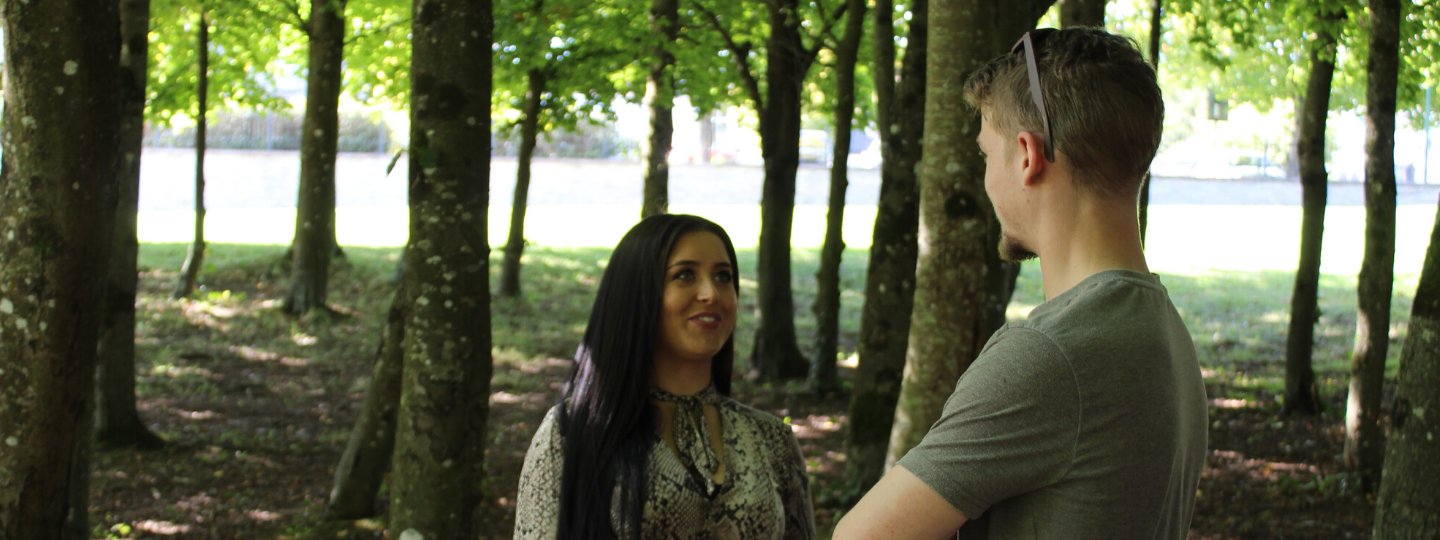Assertive communication
Assertive communication
Assertive communication means expressing ourselves in a direct, open and honest way that is respectful of other people. It helps avoid confrontation.

Assertive communication means expressing ourselves in a direct, open and honest way that is respectful of other people.
It is about communicating our needs to another person and working towards ‘win-win’ solutions to avoid confrontation.
Imagine a seesaw where passive communication is on one side and aggressiveness on the other. Assertiveness is the neutral, level middle ground.
Stating boundaries
Being assertive will not guarantee fair treatment by others, nor does it mean we will always get what we want. However, communicating assertively can help us to feel more in control of everyday situations.
When we are able to clearly state our boundaries it can help prevent feelings like anger and resentment from building up. Other people will respect us more if we can communicate in an assertive way.
How to communicate assertively
Be as specific and clear as possible about what you want, think and feel. Use these:
- “I want to…”
- “I don’t want you to…”
- “I liked it when you…”
- “I have a different opinion. I think that…”
Be direct, deliver your message to the person for whom it is intended.
If you have ever heard someone was upset about something you did, but they did not speak to you directly, you know how hurtful this can be. Communicate directly with the person that you are having the difficulties with.
“Own” your message
It can be easy to bring other people in to the issues we want to address or to claim to speak on behalf of others. This can lead the other person to feel under siege and become more defensive. Assertive communication means taking ownership for what you want to say.
Compare the potential impact of these openers:
- ‘All of us in the house are getting annoyed with …’ versus ‘This is how I feel about …’
- ‘Some people think you’re being unfair’ versus ‘This is how I view the situation’.

Avoid blaming statements
Being assertive means giving our perspective on a situation. But the other person may have and is entitled to a different view.
If we place blame them, the other person will become defensive. We want to try to avoid a discussion becoming confrontational. Try to avoid blaming the other person for something, instead focus on how you feel.
Compare these statements:
- ‘You’re wrong.’ versus ‘I don’t agree with you’
- ‘You make me feel upset.’ versus ‘I feel upset when you do this’
- ‘You never listen.’ versus ‘I don’t feel like you’re hearing me’.
Use factual descriptions
When we are feeling upset or frustrated, it can be easy to focus on our interpretation of a situation rather than the facts.
It can be hard to be objective. But try to step back from the situation that’s upsetting you and look at what is fact rather than opinion. Focus on these.
Compare these statements:
- ‘This place is a dump’ versus ‘The rubbish bin hasn’t been emptied this week’
- ‘Your section of the project is sloppy’ versus ‘There are some typos and inaccuracies in your work’
- ‘You’re a rubbish friend’ versus ‘You’ve stood me up twice this month’.
Avoid exaggerations
It can be easy to start exaggerating when our emotions are heightened. This undermines the messages we’re trying to give. As above, try to be factual when you are raising an issue or concern.
Compare these statements:
- ‘You’re always drunk’ versus ‘You’ve gone out drinking four nights this week’
- ‘You’re never on time!” versus ‘You were 15 mins late today. That’s the third time this week’.
Two way communication
Nobody likes being given out to. Try to open up a dialogue with the other person.
Ask ‘how do you see this situation?’ or ‘do you understand my point of view?’ Encourage the other person be clear, direct and specific in their feedback to you. Be open to understanding their perspective.
Don’t just talk the talk
Being assertive is not just about the words you use. It is about how you communicate verbally and non-verbally, using your voice, tone gesture, facial expression and posture. It can take time and practice to become assertive in our communication, so be patient with yourself.
Choose your time and place
If you are planning to have a difficult conversation with someone, think about where and when. Find a time when you are both available and not rushing off to something else. Talking about household chores when someone is trying to meet an assignment deadline is not a good idea!
Think about where you want to talk. Choose somewhere private so you won’t be interrupted. Or maybe somewhere for a cup of coffee where there are other people around might mean everyone keeps calm.

Pick your battles
In most situations involving other people, a degree of compromise will be required. Decide what are the most important areas you want to address with another person. What are the things that you can let go?
If you choose to address every single issue, you are less likely to get a positive response.
You don’t have to be assertive all the time, in all circumstances. Remember that it is your right to stand up for yourself and assert your needs.


